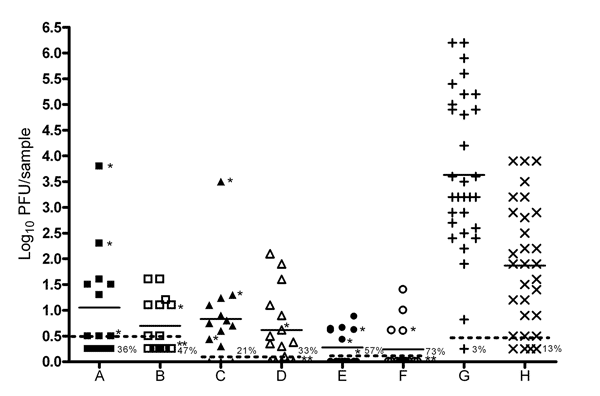Volume 12, Number 8—August 2006
Research
Venezuelan Equine Encephalitis Virus Transmission and Effect on Pathogenesis
Figure 1

Figure 1. Titers of Venezuelan equine encephalitis virus (VEEV) transmitted in vitro or in vivo by Aedes taeniorhynchus. A, C, and E) Mosquitoes that engorged to completion (depicted by closed symbols). B, D, and F) Mosquitoes who probed but did not engorge (depicted by open symbols). The assay used to determine the virus titer was either cell culture assay (A and B, depicted by squares) or real-time reverse transcription–PCR (C and F) of tail homogenate supernatant (C and D, depicted as triangles) or pellet (E and F, depicted as circles). The last 2 cohorts (G and H) represent VEEV titers in saliva of mosquitoes allowed to salivate for 45 min (G, depicted as +) or for the same range of times (<3 min) required for mosquitoes to engorge completely on mouse tails, repeated in triplicate (H, depicted as ×). Solid horizontal lines indicate means, and horizontal dashed lines indicate detection limits for the assays. Symbols below the dashed lines indicate samples from infected mosquitoes (bodies and legs or wings positive for cytopathic effects) that were below the limit of detection for the assay, and numbers indicate the percentages for these negative samples (column A=36%, B=47%, C=21%, D=33%, E=57%, F=73%, G=3%, and H=13%). *Denotes mice that were bitten by a given mosquito that died.